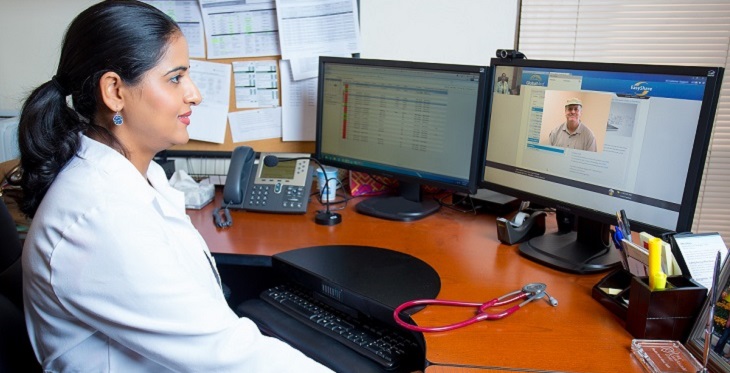Comprehensive Telemedicine Reviews: Just How They Can Overview Your Medical Care Choices
Welcoming Telemedicine: Transforming Healthcare Distribution for a Modern World
As we navigate an age identified by rapid digitalization and progressing person needs, the combination of telemedicine right into conventional health care techniques presents a compelling recommendation. In discovering the implications and complexities of accepting telemedicine, a nuanced understanding of its complex impact on health care delivery in the modern world ends up being imperative.
The Evolution of Telemedicine
Telemedicine has actually undertaken substantial advancement over the previous couple of years, changing the landscape of medical care distribution. Developed to link the space between healthcare service providers and clients in remote areas, telemedicine has actually currently broadened its reach to offer a vast array of clinical services through technical improvements.
In the beginning, telemedicine primarily entailed examinations by means of telephone or video conferencing. However, with the spreading of digital tools and systems, health care professionals can currently from another location keep an eye on essential signs, conduct virtual examinations, and even perform specific medical treatments. This change towards even more extensive digital care has actually revolutionized the means healthcare is provided, making it more hassle-free and accessible for individuals.
Furthermore, the combination of digital health documents (EHRs) and telemedicine has actually enhanced sychronisation amongst healthcare groups, bring about much more reliable and collaborative person care. Telemedicine reviews. With the continuous innovations in expert system and remote surveillance tools, telemedicine is poised to continue advancing, providing cutting-edge remedies to improve healthcare end results worldwide

Advantages of Telemedicine Adoption
As the application of telemedicine has increased to include a broader spectrum of clinical solutions and technological capacities, the advantages of its adoption in contemporary medical care delivery have actually come to be progressively noticeable. One of the main benefits of telemedicine is increased accessibility to medical care solutions, specifically for people in remote or underserved areas. Patients can now seek advice from with doctor without the demand for lengthy travel, minimizing both time and price barriers. Furthermore, telemedicine improves ease for patients by enabling them to arrange consultations sometimes that suit their schedules, promoting much better adherence to therapy strategies.
Moreover, telemedicine can lead to enhanced wellness outcomes via enhanced care control. Telemedicine can help ease strain on standard medical care systems by decreasing congestion in hospitals and centers, eventually enhancing total efficiency and client contentment.
Conquering Telemedicine Challenges
Dealing with the obstacles integral in incorporating telemedicine into existing healthcare systems offers an essential yet surmountable difficulty for health care service providers worldwide. Persuading standard health care providers to take on telemedicine needs extensive training programs and continual assistance to ensure smooth assimilation.
Additionally, regulatory barriers and compensation limitations pose considerable obstacles to the prevalent implementation of telemedicine. Numerous state and country laws relating to telemedicine practices produce a complex atmosphere for companies to browse. Compensation plans that do not effectively compensate for telemedicine solutions can discourage medical care organizations from purchasing this cutting-edge method to care distribution.

Enhancing Patient-Provider Communication
Browsing the landscape of telemedicine obstacles lights up the essential requirement for boosting patient-provider communication in modern-day healthcare shipment systems - Telemedicine reviews. Reliable communication lies at the heart of top quality healthcare arrangement, and in the world of telemedicine, where physical cues might be restricted, clear and empathetic interaction becomes a lot more critical
Enhancing patient-provider communication in telemedicine includes numerous strategies. First of all, developing rapport and trust with energetic listening and compassion can help foster a strong patient-provider connection. Making use of protected messaging systems or teleconferencing tools can facilitate practical and routine interaction between clients and carriers. Furthermore, offering clear directions, setting sensible expectations, and making sure open lines of interaction for follow-up inquiries can improve the general individual experience in telemedicine.
Future Trends in Telemedicine
Anticipating the advancement of telemedicine, improvements in innovation and healthcare distribution systems are leading the way for innovative strategies to individual care. Among the future patterns in telemedicine is the integration of fabricated intelligence (AI) and machine understanding algorithms to enhance analysis capabilities. AI can assess large amounts of individual data promptly, helping doctor in making much more exact diagnoses and therapy decisions. In addition, making use of digital reality (VIRTUAL REALITY) and augmented truth (AR) in telemedicine is gaining energy. These technologies can produce immersive experiences for both individuals and service providers, promoting virtual appointments and medical training simulations.
By leveraging telemedicine, medical care carriers can get to individuals in remote check that places, enhancing access to high quality care. These advancements in telemedicine hold great promise for changing health care shipment and enhancing client outcomes in the future.
Conclusion
Finally, telemedicine has actually reinvented health care delivery by boosting accessibility to care, boosting efficiency, and boosting person results. Despite challenges, the advantages of telemedicine adoption are clear, leading the means for much better patient-provider communication and future innovations in health care. As technology proceeds to progress, telemedicine will play a critical function in transforming medical care shipment for a modern-day world.

Preparing for the development of telemedicine, developments in technology and medical care shipment systems are paving the means for ingenious approaches to person care. These developments in telemedicine hold wonderful pledge for transforming medical care delivery site web and boosting individual important source results in the future.
In final thought, telemedicine has actually transformed health care distribution by improving access to care, boosting performance, and enhancing individual outcomes.